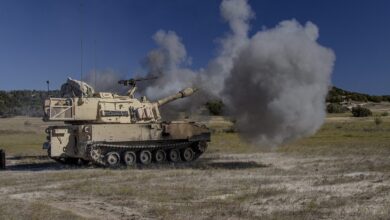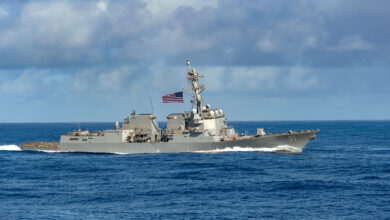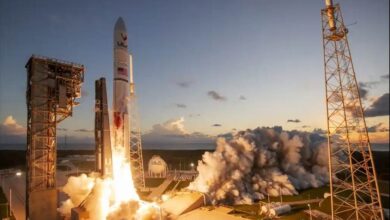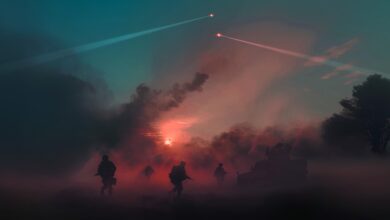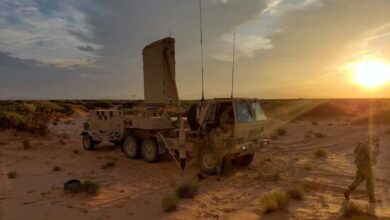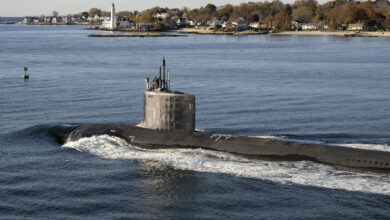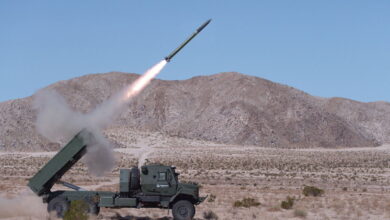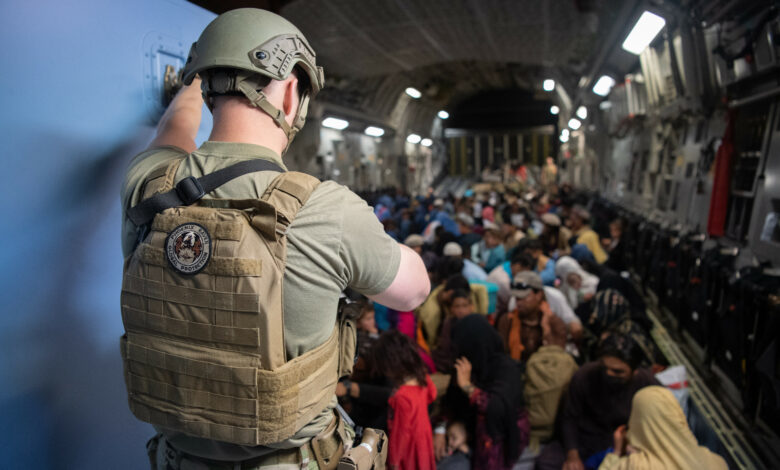
In late August 2021, from the US military’s joint operations center at Hamid Karzai International Airport, I watched several drone video feeds of Afghan civilians swarming a C-17 aircraft.
For the next two days, as desperate Afghans and foreign nationals attempted to flee the fallen country, the initial crowd of around 5,000 people overrunning the airport appeared to double every 12 hours.
The Taliban presence south of the airport, combined with their nightly movements throughout Kabul, suggested the possibility of a deliberate, coordinated effort to create a situation where US Marines would inadvertently kill civilians.
If this happened, Taliban fighters would, in theory, gain the favor of the civilians by appearing to “heroically” save Afghans from international forces.
Unpredictable and Messy
Our primary mission was to keep the runway open. We did this while snipers intermittently attacked our checkpoints and panicked civilians threatened to overrun the airport’s perimeter and runway.
When millions of lives are at stake and power is uncertain or nonexistent, the concept of law and order goes out the window. Mildly stated, our job was unpredictable and messy.
I wouldn’t have had a strong stance if you had asked me about non-lethal weapons before August 2021. My primary focus was on live fire and lethal combat relevant to any region where American forces might deploy.
I did not anticipate our combat environment would involve one of the largest air evacuations in world history combined with fixed-site security of what essentially became an island.
I could never have foreseen that we Marines would not be allowed to target our attackers. I damn sure didn’t anticipate that our unit would spend its last two weeks in Afghanistan standing post as partners alongside the same Taliban fighters that had been trying to kill us for over 20 years.

Need for Lethality
In the spring of 2021, our battalion left the United States well-trained before we deployed on a standard six-month rotation as a Marine Expeditionary Unit attached to a US Navy Amphibious Ready Group.
However, our tactics and training — and the equipment we prepared to use in combat — focused mostly on lethal, complex, direct-action missions.
While my Marines and I benefitted from learning how to get on and off a ship to raid an enemy position in a small window of time, we didn’t rely on those skills or the lethal munitions that accompanied them to control chaotic civilian crowds in and around Hamid Karzai International Airport (HKIA).
We needed more effective non-lethal weapons — which the US Department of Defense now calls intermediate force capabilities — and the training and experience to use them effectively.
Why Intermediate Force?
Russia’s invasion of Ukraine has accelerated the US national security policy shift from two decades of combat operations focused on counterterrorism and counterinsurgency towards the long-term mission of strategic deterrence against peer competitors.
In the South China Sea, US military leaders are preparing to counter an adversary with scalable capabilities ranging from precise lethality to less-than-lethal means.
Since January 2019, Russia has officially been developing weapons that will be mounted on unmanned aerial vehicles and robots and can produce not only kinetic lethal outcomes but also non-lethal acoustic, flashing, and irritating effects.
Intermediate force capabilities refer to a broad array of new and existing operational tools, including non-lethal weapons, that offer scalability between presence and lethality.
From increasing offensive capabilities along the electromagnetic spectrum to establishing a permanent degree of legally permissible actions — that could potentially include deadly force — peer adversaries are preparing for a range of force options.
These types of capabilities can contribute to accomplishing US strategic goals in regions of peer competition by enabling scalable, less-than-lethal tactics in complex situations, such as the one we confronted in Afghanistan.

The Battle of Hamid Karzai International Airport
On August 26, 2021, an Islamic State militant detonated a suicide vest HKIA’s Abbey Gate, killing 13 US service members and dozens of Afghan civilians.
Days later, America’s longest war ended with a massive airlift to evacuate hundreds of thousands of Americans, foreign citizens, and vulnerable Afghans. The US service members successfully conducted the airlift transporting men, women, and children from a hostile environment without using deadly force while keeping a hidden enemy at bay.
Almost two years later, few people appear to understand the amount of combat required to secure and maintain what was Afghanistan’s only functioning international airport for over two weeks.
Taliban units persistently attacked, with assaults halting only the day before US State Department authorities and Taliban representatives brokered a deal.
The resulting agreement mandated that US Marines stand post alongside the same Taliban soldiers who, moments before (and for more than two decades), were our sworn enemies. To say this was an uncomfortable and demoralizing experience would be among the century’s biggest understatements.
When I arrived in Kabul in mid-July 2021 as a special advisor to the commanding general who would be tasked with the evacuation, we were told we would be securing the airport at a time and date to be determined. I began preparing for that operation.
As it turned out, the Taliban offensive across Afghanistan, culminating with the fall of Kabul, decided the evacuation timeline rather than the US or coalition chain of command.
Despite multiple combat deployments, this was my first time carrying a cell phone in combat (we previously had satellite phones). Anytime I had the opportunity, I could call my wife and tell her I was still alive.
And when I called, she would ask me about the latest 30-second videos released on Twitter, Instagram, and TikTok that the public assumed to be the most authoritative sources of ground truth.
Video: People run on tarmac of Kabul international airport as a US military aircraft attempts to take off. pic.twitter.com/9qA36HS0WQ
— TOLOnews (@TOLOnews) August 16, 2021
Those viral snapshots from Afghans often portrayed events inaccurately by failing to provide the context of the firefight or airplane arrival right before someone’s smartphone camera started rolling. Misinformation was seemingly as rampant as the hysterical crowd and proliferated with stunning ease.
Like accurate information, non-lethal weapons need to impact an entire crowd to be effective. Although our unit had been through non-lethal weapons training before deployment, by the time we got to HKIA, there was no time left for training.
We could only invent tactics on the ground. Initially, we spent two days and nights fist-fighting the hordes of Afghans to maintain control of the airport. Once that was accomplished, we had to maintain the “grind on the gates” with on-the-spot refresher training on Stinger grenades and improvised weapons of opportunity.
Defending the airport’s runway and main gates, our unit went through our advance team’s supply of Stinger grenades and tear gas canisters in a matter of hours.
In both military and civilian terminals, HKIA was a humanitarian disaster. Living conditions for Afghan civilians and US military forces alike were terrible. Refuse, flu, and COVID-19 were rampant. Afghans fought and assaulted each other for real and imagined evacuation opportunities. Military medical personnel treated everyone they could despite the repellant conditions and performed heroically.
Being in the middle of a national capital that had just fallen, standing shoulder-to-shoulder with that longtime enemy and lacking the permission to defend ourselves confidently compounded the palpable sense of terror and urgency. And yet, we completed the mission.
On multiple occasions, C-17s took off or landed with wings directly over our heads as we were restraining an Afghan crowd five meters — five meters — from the runway. In scenarios like these, intermediate force capabilities such as directed energy weapons would be far more useful than grenades and tear gas.
If US military personnel were trained on these systems and the systems were fielded to infantry battalions or Marine Expeditionary Units, they could have saved both Afghan and American lives.
Logistically speaking, the airlift evacuation from Afghanistan was among the most remarkable humanitarian achievements in history. Much has been written about the strategic failures that allowed the Taliban to take Kabul. Less has been said about the tactical and operational lessons learned from Marines and soldiers who endured the full spectrum of conflict.
For two weeks, the most dangerous place in Kabul changed by the hour. Sometimes it was Abbey Gate, where the suicide bombing happened. Other times it was the airport runway, where 200 US Marines pushed several thousand Afghan civilians beyond the flight line.
Other times again, it was the airport terminal, which sustained intermittent sniper fire. Simultaneously, Taliban units established checkpoints around the airport, including south of the main exit.
As we tried to funnel Afghan civilians who entered the airport perimeter out a gate, they realized they were trapped between Taliban bullets and American fists. Most chose our fists.

Intermediate Force for Future Operations
While the men and women I served with did everything within their ability to prepare for the mission, in hindsight, better tools could have been available that would have helped us accomplish the task.
The need to expand time and space while dealing with evolving threats requires further development and integration of force capabilities beyond lethality.
American battlefield leaders have a strategic, operational, and tactical obligation to provide forces with the ability to determine enemy intent at range, neutralize threats before they become lethal, and disrupt, delay, and impair enemies across all domains.
In situations such as infrastructure defense, intermediate force capabilities can help commanders expand decision time and space in ambiguous situations and help to prevent unnecessary destruction and loss of life.
Examples include acoustic hailers, active denial devices that warn or actively disperse individuals and crowds, and similar systems that could hamper or disable vehicles or vessels.
How would US forces accomplish an air evacuation from Taipei or any vulnerable city in the South China Sea? What technology would Americans use to defend and evacuate one of Vietnam’s small Spratly Island civilian settlements?
Consider the ongoing and ever-present risk of how an enemy can hide within and observe from a civilian population in any operational circumstance, including reconnaissance or counter-recon operations.
Even where force is warranted, experience shows that US military personnel have less of an issue of destroying a target and more challenges in defending against what cannot be identified or engaged.
Non-lethal weapons can reduce the risk of moral injury to the people whom US authorities ask to carry out complex missions.

At HKIA, the skills of chaplains were as crucial as combatants for young men and women to process the human tragedy as they decided who would live or die.
At one checkpoint towards the evacuation’s end, the momentum of the mostly male crowd pushed a young Afghan girl to the ground. As a US Marine reached down to help her, a Taliban soldier pointed his rifle at the infantryman, loudly reminding all parties that men were now forbidden to touch women publicly.
Although leadership diffused the tension and the girl stood up on her own, the incident provides a case study of how intermediate force options can help achieve operational goals.
Non-lethal weapons can mitigate strategic risk by providing warfighters with tools that can seize initiative without armed conflict. They offer options that operate below the level of armed conflict. They also provide options that are linked with lethal force and a means to escalate and de-escalate rather than simply projecting lethality in tense and decisive moments.
From the battalion commander to the lowest private, the men and women I worked with showed courage, bravery, and extreme valor. Knowing that daily they were deciding who lived and died in Afghanistan daily, these young men and women went out and risked their lives to do it because their sense of duty demanded it of them.
Training and equipping American forces with non-lethal weapons will give them every chance of succeeding when this inevitable event happens again.
Intermediate force options are necessary to compete against adversaries and enable American veterans to return from tomorrow’s battlefields, wherever they may be, as physically and psychologically intact as possible.
 Bill Callen retired from the Marine Corps as a Marine Gunner after 23 years of service.
Bill Callen retired from the Marine Corps as a Marine Gunner after 23 years of service.
Prior to promotion to Gunner, Callen spent his time in the infantry, serving in the 1st, 2nd, and 3rd Marine Divisions.
In 2021, Gunner Callen was awarded the Gunner Henry Lewis Hulbert Trophy for Outstanding Leadership.
The views and opinions expressed here are those of the author and do not necessarily reflect the editorial position of The Defense Post.
The Defense Post aims to publish a wide range of high-quality opinion and analysis from a diverse array of people – do you want to send us yours? Click here to submit an op-ed.


